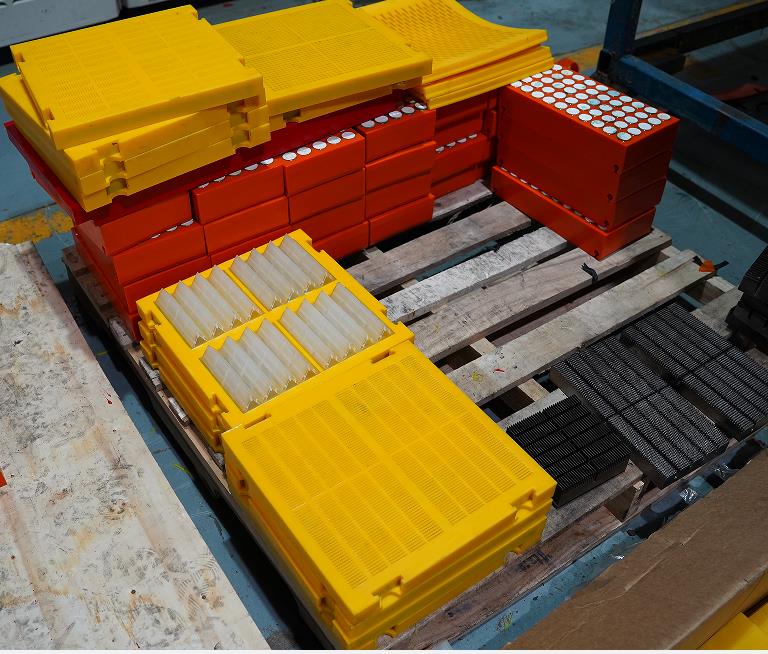What changes does polyurethane screen bring to mining enterprises?
Polyurethane screens have brought many changes to mining enterprises, such as improving efficiency, reducing emissions and energy, and increasing recovery rates
Polyurethane screens have brought many changes to mining enterprises, such as improving efficiency, reducing emissions and energy, and increasing recovery rates. In the final analysis, it has improved the economic benefits of mining enterprises, which is also the biggest reason why polyurethane screens are popular. How does polyurethane screens improve the economic benefits of mining enterprises? Let me introduce it to you in detail.

The superiority of polyurethane screens in conventional performance has been mentioned many times, and I will not repeat it. Let's talk about the role of polyurethane screens in fine screening and the economic benefits brought by polyurethane screens. In recent years, the successful development of overlapping screening equipment and polyurethane screens with mesh sizes as fine as 0074mm has made fine-grain screening more suitable for mineral processing. Fine-grain screening equipment with large processing capacity is equipped with anti-blocking polyurethane screens with long wear life, making it a reality to bring greater economic benefits to the mineral processing industry due to accurate classification.
The main application operations and functions of high-frequency vibration fine screens as fine-grain screening equipment in iron ore beneficiation plants are introduced as follows. The cancellation of secondary dehydration operations has little effect on the selection indicators of the new process. The tailings yield of the secondary dewatering operation in the original process was only 2.52%, and the -0.074mm content was above 98%. This part of the tailings was sorted by magnetic separation columns in the new process, and the ore entering the magnetic separation column was thrown out as tailings by the concentrated magnetic separation operation. After the secondary dewatering operation was cancelled, the water consumption of the series was reduced from 12.093㎡/t in the original process to 8.843m3/t in the current process, a reduction of 3.253m3/t.
Here is a brief introduction to the development history of high-frequency fine polyurethane screens. As early as 1989, advanced foreign polyurethane manufacturers invented a tensionable wear-resistant and anti-blocking polyurethane screen, which promoted the further development of high-frequency vibration fine screens. The screen has the anti-blocking characteristics of non-blocking and non-sticky holes, and its service life is 8.20 times that of stainless steel screens. Although there are many shortcomings, it has surpassed traditional metal screens by a lot. Later, Derek Company successfully developed a wear-resistant and anti-blocking polyurethane screen with a mesh size of 0.074mm in early 2006, with an opening rate of up to 30%. Subsequently, China's fine screens have also made major breakthroughs and gradually reached the world's leading level.
Miners know that when the density difference between useful minerals and vein minerals is large, fine screens are used for grinding and classification. The traditional classification method of hydrocyclones and spiral classifiers is to achieve particle size classification through the difference in sedimentation velocity (gravity or gravity and centrifugal force). However, when the density difference of minerals is large, the useful minerals dissociated from gangue minerals or intermediate conjoined bodies and fine-grained monomers have similar sedimentation velocities, which will cause the fine-grained monomer dissociated minerals to return to the mill for grinding, and the gangue minerals and intermediate conjoined bodies to enter the final concentrate.
Fine screens are classified according to the geometric size of particles, which is not only conducive to improving the quality of the final concentrate, but also can increase the mill processing capacity and reduce the energy consumption of grinding. For example, there is an ilmenite grinding series that originally used closed-circuit classification of hydrocyclones. In order to improve the classification efficiency, polyurethane fine screens were used to replace hydrocyclones, and the circulating load was reduced from 300% to 350% to below 100%, and the mill processing capacity increased by about 30%.



